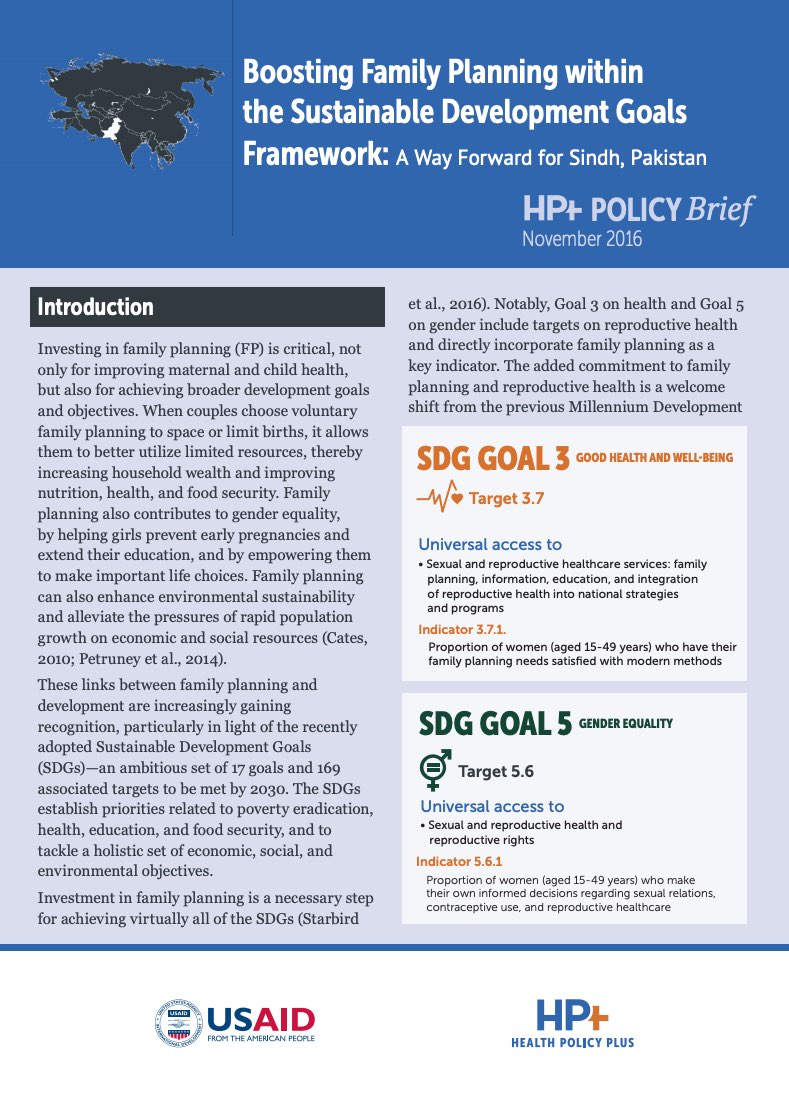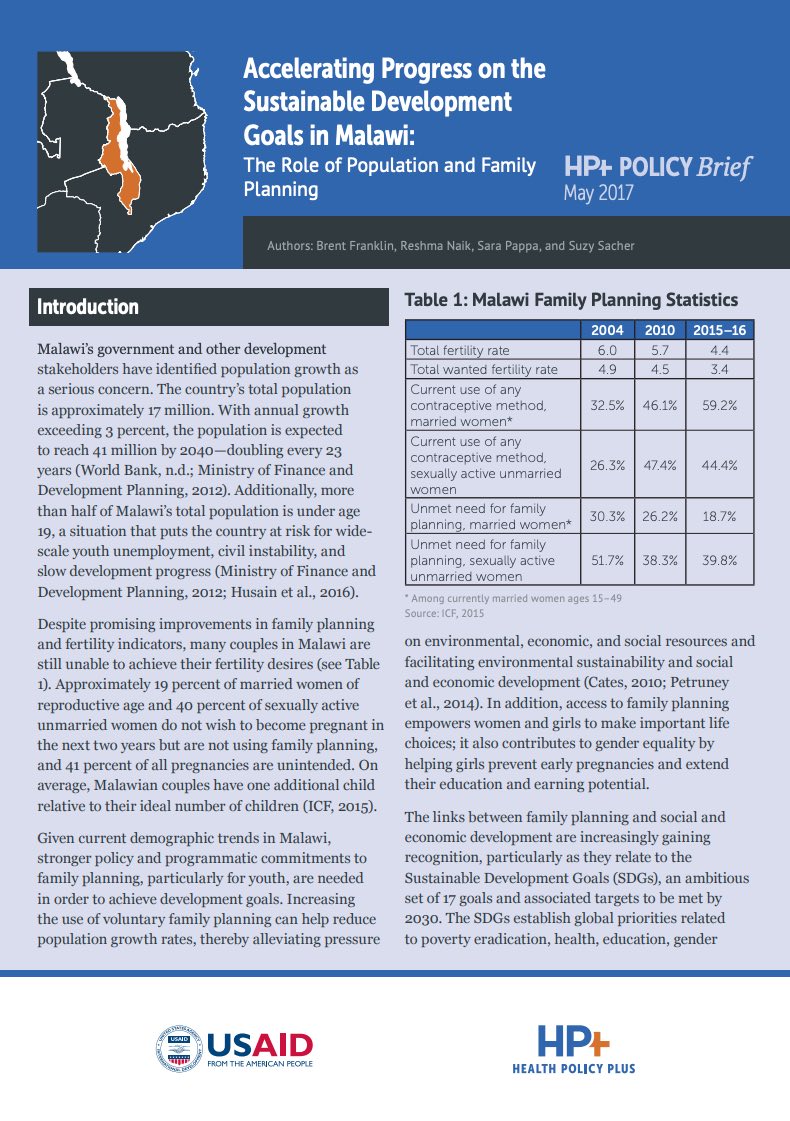Recent research suggests linking family planning to broader development goals may alleviate of rapid population growth and associated pressures upon natural and human resources.
Rising populations affect access to clean water, transport, and electricity; access to social services, such as education; environmental sustainability; and food security, among other things. Reducing unintended pregnancies through voluntary family planning is one clear way of easing such pressures.
The United Nations adopted Sustainable Development Goals (SDGs), a set of 17 goals and 169 associated targets (to be met by 2030) that establish priorities for poverty eradication, health, education, and food security, and a host of related economic, social, and environmental objectives. An added commitment to family planning and reproductive health in the SDGs will require concerted efforts at the national and subnational level.
How can this be done in Malawi where more than half of the total population is under age 19, a situation that puts the country at risk for widespread youth unemployment, civil instability, and slower development? Or in Sindh province in Pakistan where the population is growing at 2 percent per year and whose capital city Karachi has the 12th largest urban population in the world? Two new policy briefs from the Health Policy Plus (HP+) Project focus attention on these questions. HP+ is a partnership between Palladium, Avenir Health, Futures Group Global Outreach, Plan International USA, Population Reference Bureau, RTI International, the White Ribbon Alliance for Safe Motherhood, and ThinkWell.
The answer is with key stakeholders representing government, civil society, and the private sector, ensuring that objectives and priorities around the SDGs are locally relevant and realistic. Successful policy execution will require building the capacity of government departments that are implementing programs, by tracking progress towards policy targets, and holding policymakers accountable for promised commitments. A first step is aligning provincial-level development goals with the SDGs. And, a good place to start is with family planning.


 ">
"> ">
">